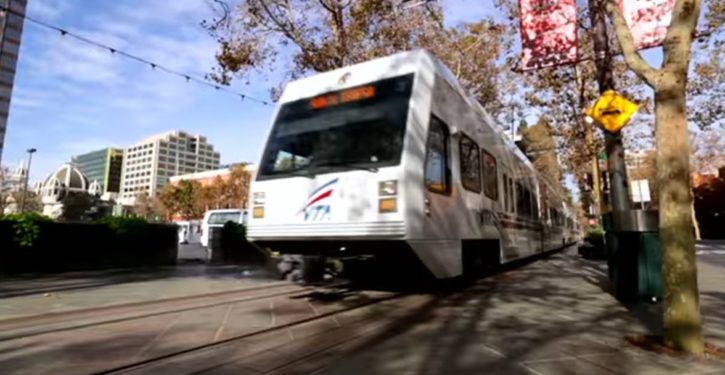
Mass transit is used by radically fewer people than even a couple years ago. But under the wasteful infrastructure package that President Biden recently signed into law, more money will be spent on it than ever before. The Cato Institute’s Randal O’Toole describes the absurdity of it:
Your industry gets government subsidies equal to two‐thirds of its operating costs and all of its capital costs, and still most people refuse to use your services. Do you:
a. Increase operating subsidies so you can give away your services for free?
b. Spend more on capital improvements that haven’t attracted more customers in the past?
c. Penalize American who aren’t using your services?
d. Redefine your mission so that you appear relevant even if almost no one uses your service?
How about e. All of the above? That appears to be the transit industry’s solution to the fact that, except in New York City, almost no one rides transit anymore. Data released by the Department of Transportation early this week, for example, reveals that October transit ridership was barely more than half of pre‐pandemic levels even as driving has returned to nearly 100 percent, flying is 80 percent, and Amtrak is 72 percent. Even in New York, transit ridership remained less than 57 percent of pre‐pandemic levels.
To get riders back, transit agencies are trying a variety of strategies:
Free fares: President Biden is going to Kansas City this week to promote free transit. Since taxpayers are already subsidizing so much of the cost of providing transit, why not just have them subsidize all of it? Kansas City adopted free fares last year and ridership increased a little bit. But Kansas City residents still travel by car more than 500 times as much as they ride transit, so what is the point of free fares?
Capital projects: Meanwhile, transit agencies all over the country are gleefully anticipating their share of the billions of dollars of transit funds in the recent infrastructure bill. Portland, whose last light‐rail line cost $1.5 billion and yielded zero net new riders, wants to spend billions more on its next light‐rail line. Denver’s Regional Transit District wants to build a rail line to Longmont even though its own analysis found that it would end up costing $65 per rider. St. Louis wants to build a new light‐rail line even though its transit system carried fewer riders in 2019 than it did before it started building light rail in the early 1990s.
Penalize the competition: Automobiles are faster, more convenient, less expensive, and–in most urban areas–greener than transit. The obvious solution, if you are a transit agency official, is to make driving slower, less convenient, and more expensive.
“It’s too easy to drive in this city,” says Los Angeles Metro CEO Phil Washington, referring to the city that is often ranked as one of the most congested in the world. Washington’s solution to declining bus ridership is to convert many of the lanes on major streets to exclusive bus lanes, thus increasing congestion and, he hopes, forcing a few people out of their cars…..
Change the mission: Transit is sold to voters based on its ability to reduce congestion, save energy, and protect the environment, but it can’t do any of those things if hardly anyone rides it….
Supposedly, many “essential workers” during the pandemic had low incomes that made them dependent on transit. In fact, in 2019, only 5 percent of workers whose incomes were below $25,000 a year commuted to work by transit. During the pandemic, the percentage of all workers taking transit declined from 5 percent to 3.2 percent. Meanwhile, most of the subsidies to transit come from regressive taxes such as sales or property taxes. This means the 95 percent of low‐income workers who don’t use transit are disproportionately paying for transit rides they aren’t taking. This is the very definition of inequity.



